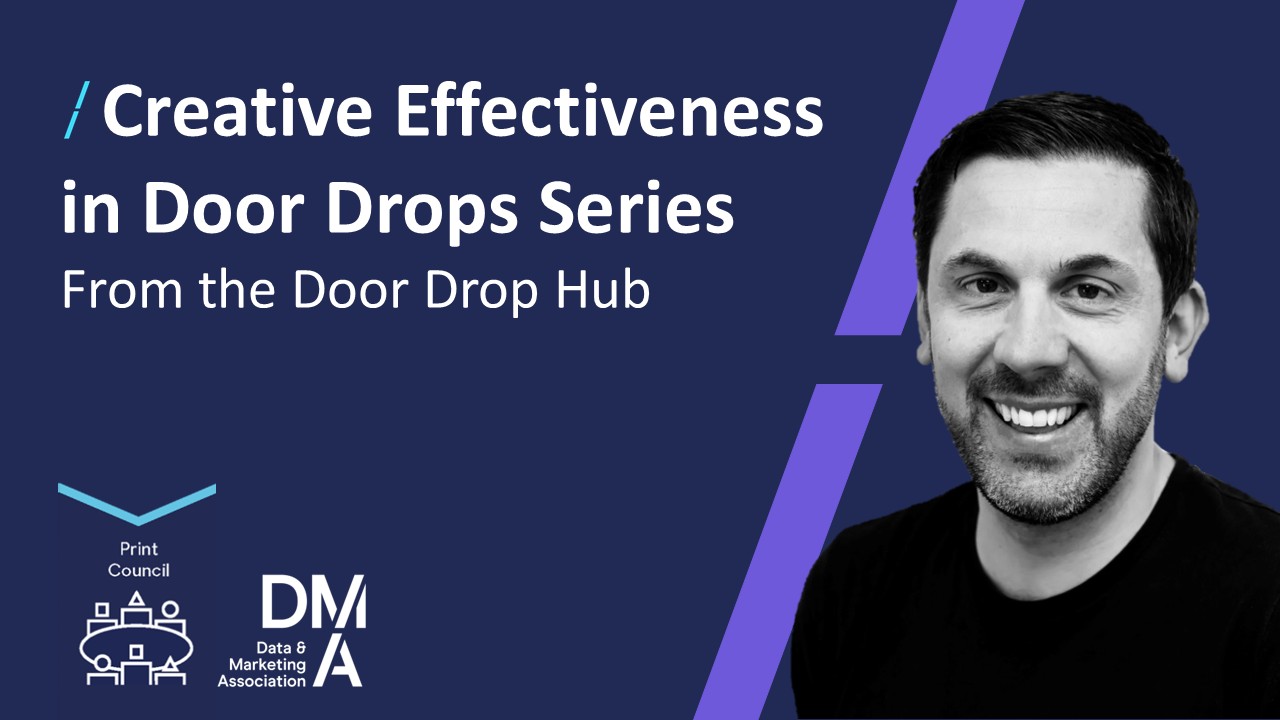Not the 5-Step Guide to Better CMR
10 Jun 2016
Using my fairly sensible copywriter head, I know that articles with ‘Top 10 Tips’ or ‘Your 5 steps’ tend to increase interaction and engagement. But, as a creative, it’s rare that we see things so clearly. When coming up with new ideas and campaigns, there isn’t a checklist or cheat sheet that we refer to. Don’t get me wrong, creatives tend to have a series of techniques, an individual methodology of how to develop a creative solution to a client problem, but they’re not always appropriate or useful in every situation.
The point is – this certainly isn’t the 5 steps guide to creating better CMR, but it is a look at CMR from the messy, swirling vortex that is a creative mind.
Before we get into looking at CMR from a creative perspective, it’s probably a good idea to address what CMR is. I know that some cynical creatives think CMR is just the new CRM. The same old CRM but with the cobwebs dusted off and given a little makeover. No. CMR isn’t just a rebrand of CRM. It’s an entire philosophy change. The focus has completely shifted from the brand onto the customer. In today’s digital world, the power balance has changed. There is now an opt-in culture where customers want to manage their interactions with brands on their own terms. In other words, the customers are now the ones holding all the cards. And with CMR, we can take a peek at their hand and deliver the cards they want.
Now, let’s take a look at CMR, but less from an academic standpoint and explore more of the creative considerations whilst working on a CMR brief.
Create your hook.
To me, this is more important in a CMR campaign than it is in any other. That’s because a successful CMR campaign can have a pretty long lifespan, so your idea needs to have legs. Big old Naomi Campbell ones. That way, your creative can span progressively throughout your campaign with each interaction. Your entire CMR program will live and die on whether or not it’s engaging – so a disruptive, creative hook is always a good place to start.
It’s not me. It’s you.
Of course the product is important but, in CMR, it’s not as important as the customer. Above all, the customer needs to be at the very heart of the strategy and creative concept. This can often mean a complete shift in thinking, particularly for the clients who want their product to be the star – but if you can convince them to put the customer first, then they should reap the rewards. Even the use of the word ‘you’ is a simple, yet powerful addition to your CMR creative. Try not to be contrived or gratuitous about it – our savvy customers can spot it a mile off. If done well, customers shouldn’t notice that the spotlight has shifted on to them, but they’ll feel valued. A great example of customer centric CMR is our NIVEA loves YOU campaign.
Can you feel it?
CMR is less about the USP and more about the EMO (that’s an abbreviation of emotional, for those who hate text speak). In a busy marketplace, it’s the brands who are engaging customers on an emotional level who are succeeding. Even in tricky sectors like banking and utilities, a more emotionally-led creative is what’s cutting through. Once you’ve created your concept, ask yourself ‘what do I feel?’ – if it’s not immediately obvious, you might want to take a second look at the work.
<Insert customer name here>
Personalization and segmentation are becoming ever more important in CMR and, when used correctly, they can be the most powerful tools in your arsenal. CMR should always talk to an audience of one, which means accurate segmentation and personalisation is pivotal in the success of your CMR program. It’s vital to have the right customer insights because when you talk to someone in a personal way and it’s not accurate, it can have a disastrous impact on your customer retention.
Be consistent
Ah, a contradiction. How can you talk to each customer in a segmented and personal way while keeping consistency across all of your communications? Well, that’s the challenge. Tone of voice is king here – and you need to ensure you’ve got a consistent voice across all of your media channels, from social media to your direct mail. Get all the work up on the walls. Does it hang together? Is any piece of work standing out? If so, then that’s an indicator your communications aren’t quite as consistent as they could be.
Who cares?
So many times we can get wrapped up in the practicalities of whether the idea works along each stage of the customer journey, that we forget to ask ourselves ‘who cares?’. ‘Would I actually be bothered to engage with this?’. Although you might not be the target audience, it can be a useful way to cut out any aspects of the creative that might be asking a little too much of the customer. It may be your favourite idea of the campaign, but if only 20 people engage then you’ll have an unhappy client on your hands. So sometimes it’s important to have a little creative cull for the greater good of the campaign.
Why so serious?
Lastly, it’s important to have a fun with it. To me, CMR is the most exciting part of our business. To begin relationships with customers and watch them grow and develop is what’s really powerful. And when you have the results to boot, well that’s just the icing on the CMR cake. Tuck in.





Please login to comment.
Comments